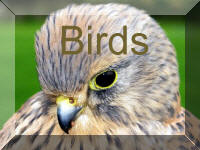Back To



A pale, black-spotted thrush - large, aggressive
and powerful. It stands boldly upright and bounds across the ground while
in flight, it has long wings and its tail has whitish edges. It is most
likely to be noticed perched high at the top of a tree, singing its fluty
song or giving its rattling call in flight.
Where does it live?
Breeding
They mainly are birds of open woodland, gardens and parkland but can be
found in open moorland areas as well. A male will have several prominent
song perches within its territory, such as tall trees or roofs.
Wintering
Similar to breeding habitats, but in winter an individual will aggressively
defend a source of food, noisily chasing everything else from its favoured
berry bush.
Where to see it
This is a widespread bird in the UK, found almost everywhere except the
highest, barest ground, and absent from the northern and western isles
of Scotland. It can be seen in woodland, parkland and gardens.
What does it eat?
Worms, slugs, insects and berries.
What does it sound like?
Loud rattling call; wild almost blackbird-like song
Click here to here the Mistle Thrush
When to see it
All year round. Watch for flocks in July and August.
Similar species
Song thrush, Fieldfare





